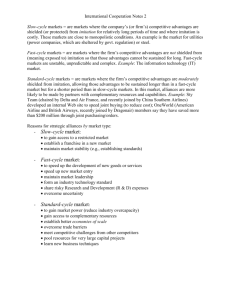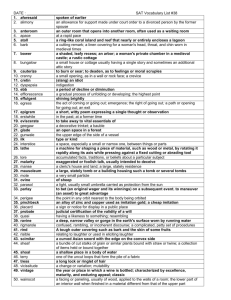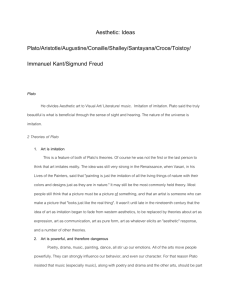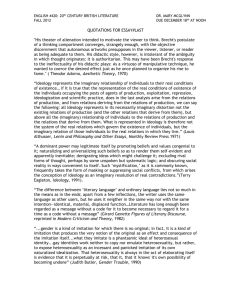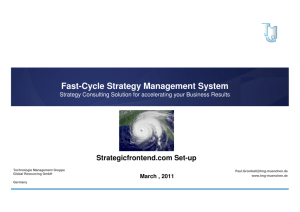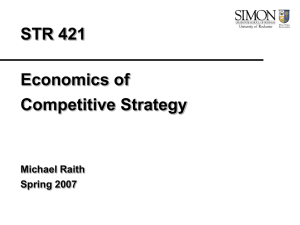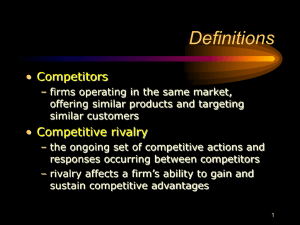Notes_2 - Pen Pacific
advertisement
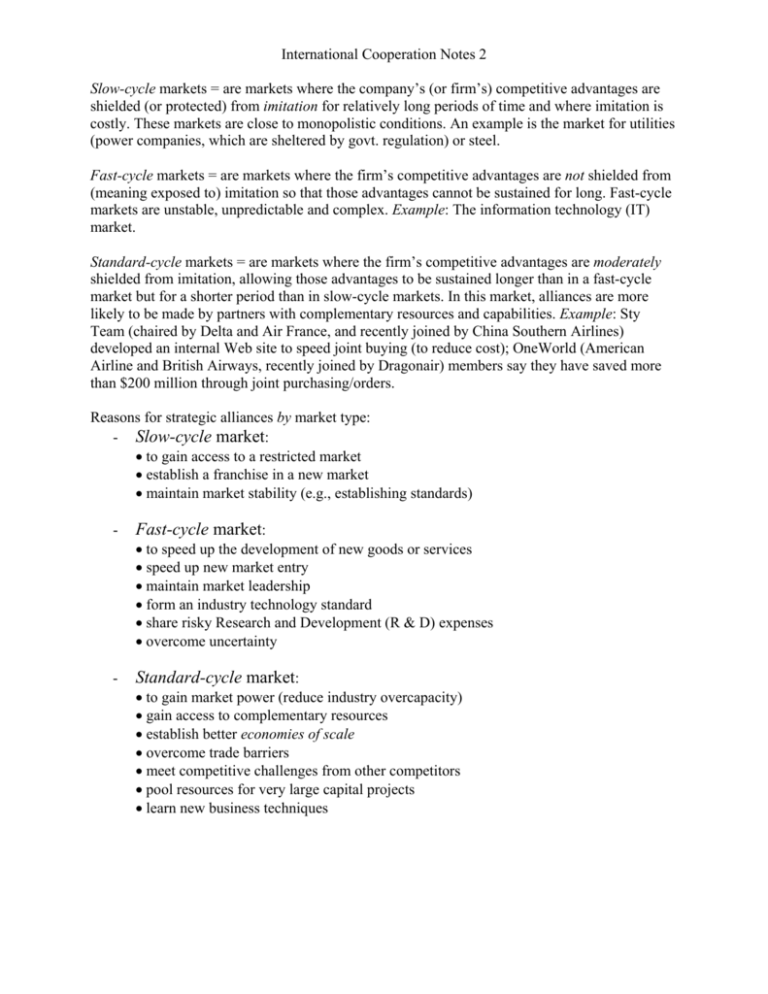
International Cooperation Notes 2 Slow-cycle markets = are markets where the company’s (or firm’s) competitive advantages are shielded (or protected) from imitation for relatively long periods of time and where imitation is costly. These markets are close to monopolistic conditions. An example is the market for utilities (power companies, which are sheltered by govt. regulation) or steel. Fast-cycle markets = are markets where the firm’s competitive advantages are not shielded from (meaning exposed to) imitation so that those advantages cannot be sustained for long. Fast-cycle markets are unstable, unpredictable and complex. Example: The information technology (IT) market. Standard-cycle markets = are markets where the firm’s competitive advantages are moderately shielded from imitation, allowing those advantages to be sustained longer than in a fast-cycle market but for a shorter period than in slow-cycle markets. In this market, alliances are more likely to be made by partners with complementary resources and capabilities. Example: Sty Team (chaired by Delta and Air France, and recently joined by China Southern Airlines) developed an internal Web site to speed joint buying (to reduce cost); OneWorld (American Airline and British Airways, recently joined by Dragonair) members say they have saved more than $200 million through joint purchasing/orders. Reasons for strategic alliances by market type: - Slow-cycle market: • to gain access to a restricted market • establish a franchise in a new market • maintain market stability (e.g., establishing standards) - Fast-cycle market: • to speed up the development of new goods or services • speed up new market entry • maintain market leadership • form an industry technology standard • share risky Research and Development (R & D) expenses • overcome uncertainty - Standard-cycle market: • to gain market power (reduce industry overcapacity) • gain access to complementary resources • establish better economies of scale • overcome trade barriers • meet competitive challenges from other competitors • pool resources for very large capital projects • learn new business techniques
